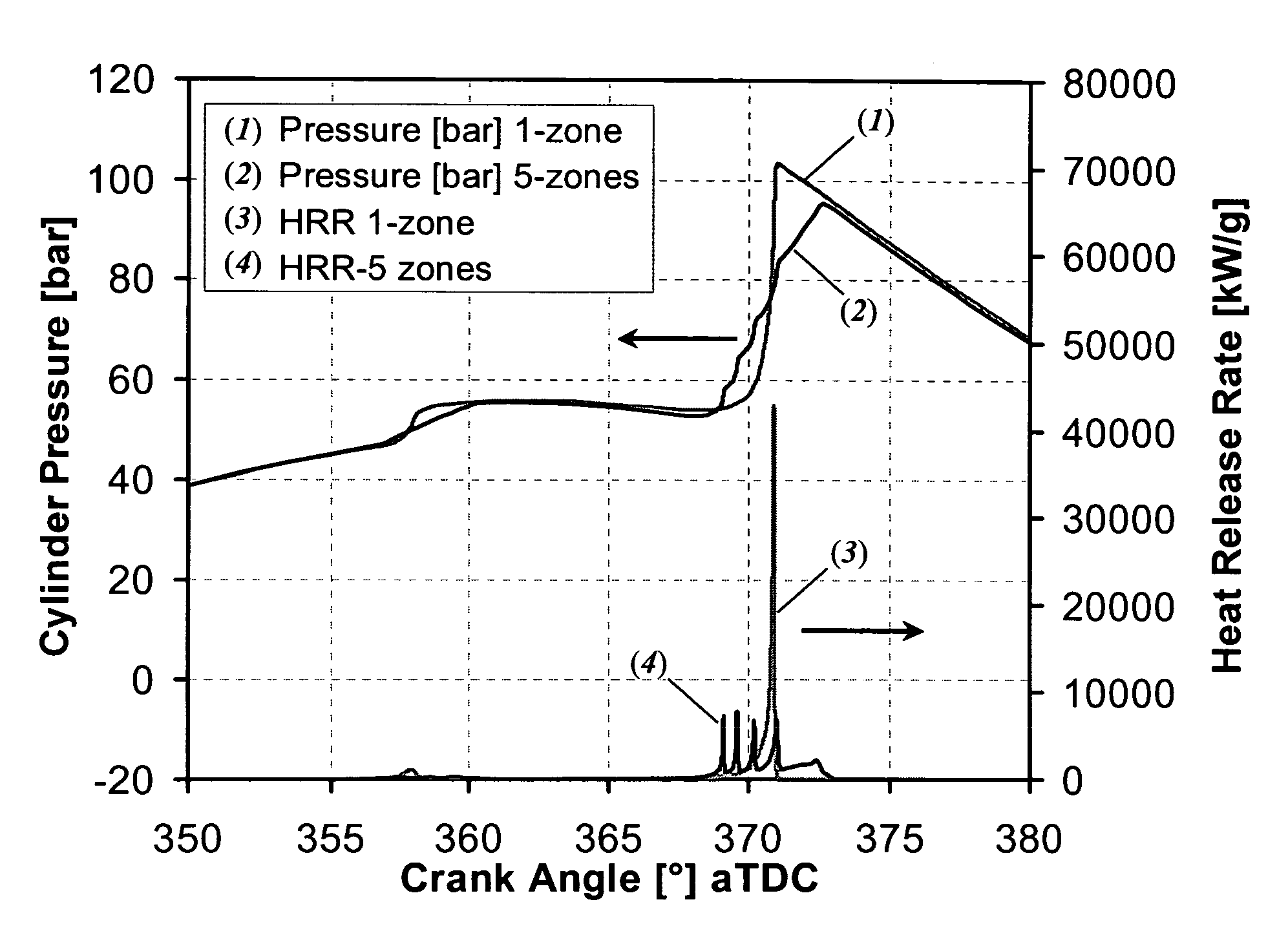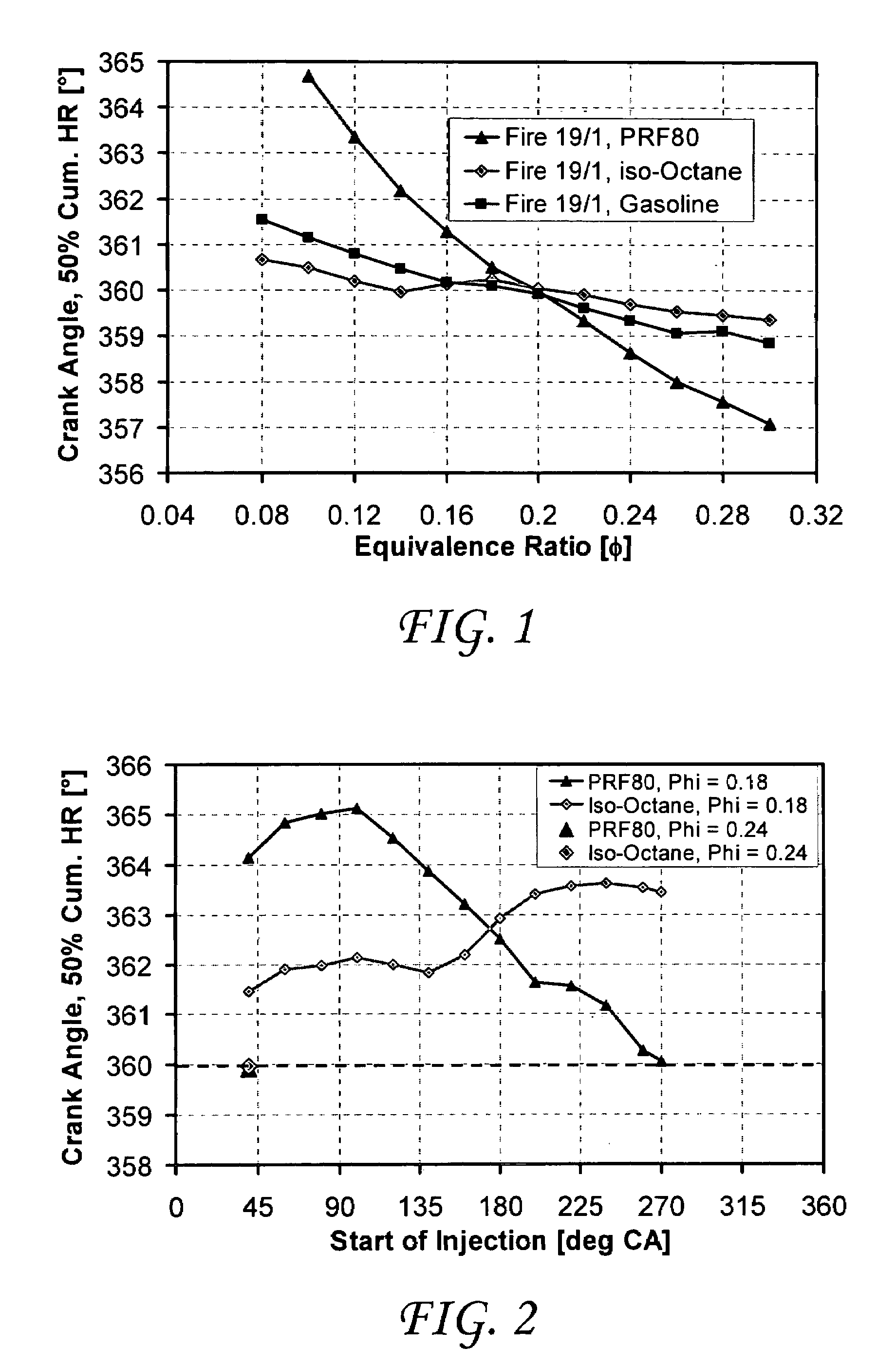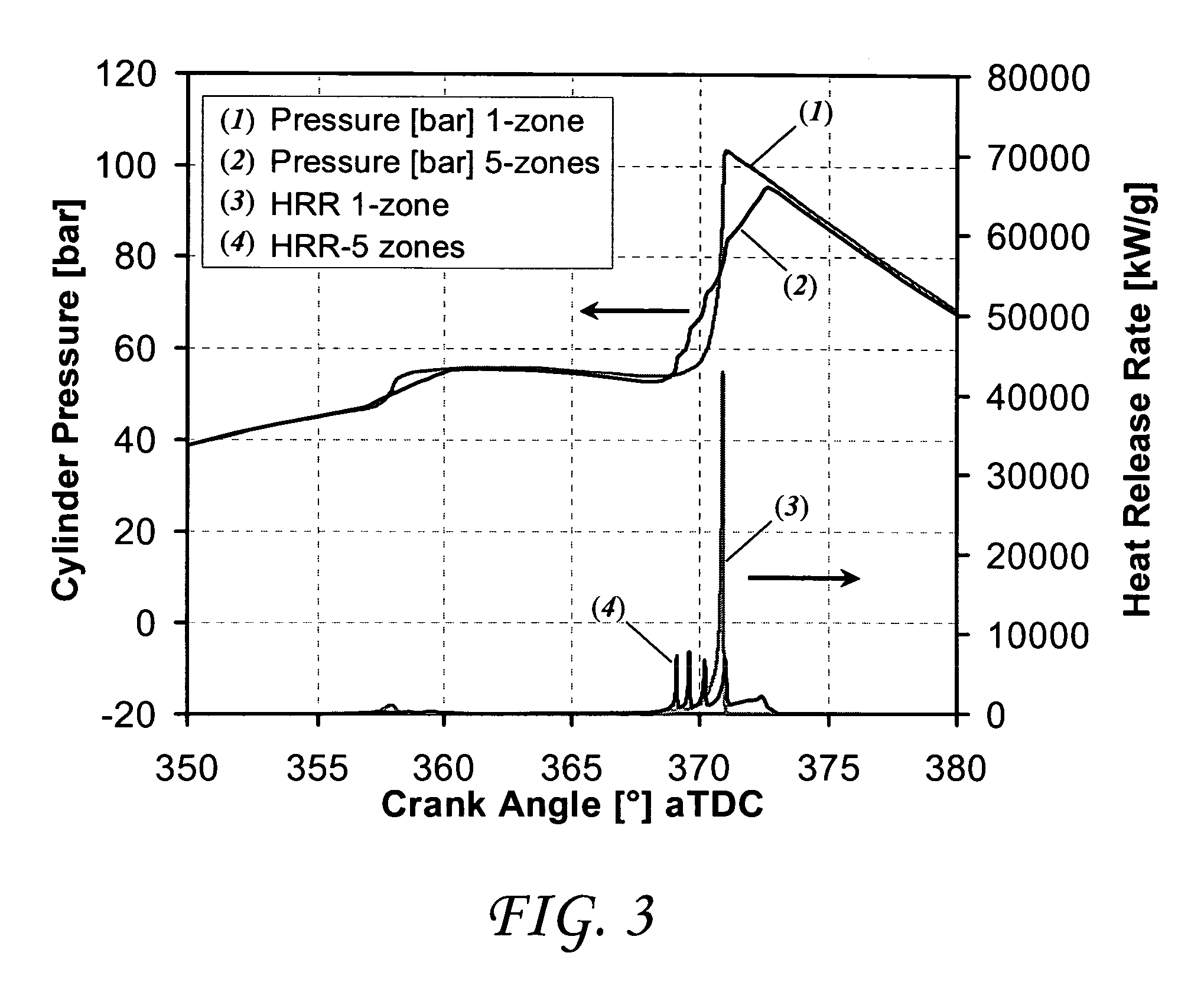Fuel mixture stratification as a method for improving homogeneous charge compression ignition engine operation
- Summary
- Abstract
- Description
- Claims
- Application Information
AI Technical Summary
Benefits of technology
Problems solved by technology
Method used
Image
Examples
Embodiment Construction
[0014]The present invention is directed to a method for improving the operation of internal combustion engines, and particularly homogeneous charge compression engines, by fuel / air mixture stratification (or fuel / air / residual fuel mixture stratification), including introducing a range of fuel / air (or fuel / air / combustion residuals) mixtures that autoignite sequentially during engine operation, to smooth the combustion heat release rate. Application of the inventive method disclosed herein provides for operation of HCCI engines at higher loads, substantially reducing or even eliminating the need to revert to traditional combustion modes, thereby reducing fuel consumption over a typical driving cycle and / or minimizing emissions of both NOx and PM. In this application, HCCI refers to any engine or combustion process in which a substantial majority of the fuel charge is premixed with air or combustion product gases (combustion residuals) to a degree sufficient for compression-induced com...
PUM
 Login to View More
Login to View More Abstract
Description
Claims
Application Information
 Login to View More
Login to View More - R&D
- Intellectual Property
- Life Sciences
- Materials
- Tech Scout
- Unparalleled Data Quality
- Higher Quality Content
- 60% Fewer Hallucinations
Browse by: Latest US Patents, China's latest patents, Technical Efficacy Thesaurus, Application Domain, Technology Topic, Popular Technical Reports.
© 2025 PatSnap. All rights reserved.Legal|Privacy policy|Modern Slavery Act Transparency Statement|Sitemap|About US| Contact US: help@patsnap.com



